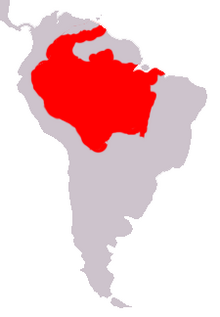Arrau turtle
| Arrau River turtle | |
|---|---|
 |
|
| Scientific classification | |
| Kingdom: | Animalia |
| Phylum: | Chordata |
| Class: | Reptilia |
| Order: | Testudines |
| Family: | Podocnemididae |
| Genus: | Podocnemis |
| Species: | P. expansa |
| Binomial name | |
|
Podocnemis expansa (Schweigger, 1812) |
|
 |
|
| Synonyms | |
|
|
The Arrau River turtle, South American river turtle, or Giant South American turtle (Podocnemis expansa), also known as the Charapa turtle, Arrau turtle, tartaruga-da-amazônia, or Araú, is the largest of the side-neck turtles (Pleurodira).
The turtles are found in the Amazon Basin (Peru, Brazil, Colombia, Venezuela, etc.). Adults often reach 1 m in length. Females have wide flattened shells and are larger and more numerous than the males. Adult Arraus feed entirely on plant food. The nesting habits of this species are similar to those of their sea turtle kindred. Like sea turtles they gather in huge numbers to travel to suitable nesting areas. The females lay their eggs on sandbanks that are exposed only in the dry season but there are relatively few such sites. The females come out on the sandbanks at night to lay their eggs, which can number anywhere from 90 to 100 soft-shelled eggs. They then return to their feeding grounds.
When hatched, the young are around 5 cm long and dart directly for the water, but they emerge to the attentions of many predators so that only about five percent ever reach the adult feeding grounds. Because of this it is an endangered species and is protected in some areas. Arrau turtles are captive bred in facilities, along with other endangered reptiles such as the Orinoco crocodile.
...
Wikipedia

